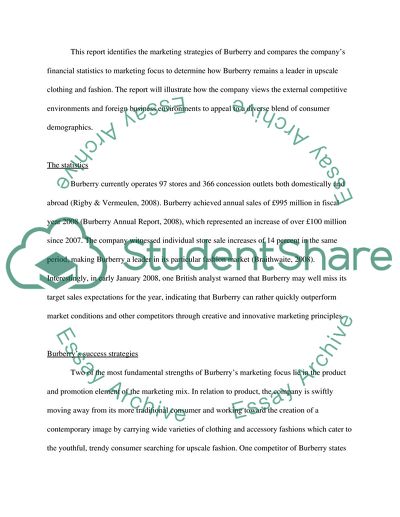Cite this document
(“Burberry: Assessment of Marketing Strategy Essay”, n.d.)
Retrieved from https://studentshare.org/marketing/1549475-marketing-researchstrategy-burberry-see-the-assignment-criteria-for-details
Retrieved from https://studentshare.org/marketing/1549475-marketing-researchstrategy-burberry-see-the-assignment-criteria-for-details
(Burberry: Assessment of Marketing Strategy Essay)
https://studentshare.org/marketing/1549475-marketing-researchstrategy-burberry-see-the-assignment-criteria-for-details.
https://studentshare.org/marketing/1549475-marketing-researchstrategy-burberry-see-the-assignment-criteria-for-details.
“Burberry: Assessment of Marketing Strategy Essay”, n.d. https://studentshare.org/marketing/1549475-marketing-researchstrategy-burberry-see-the-assignment-criteria-for-details.


